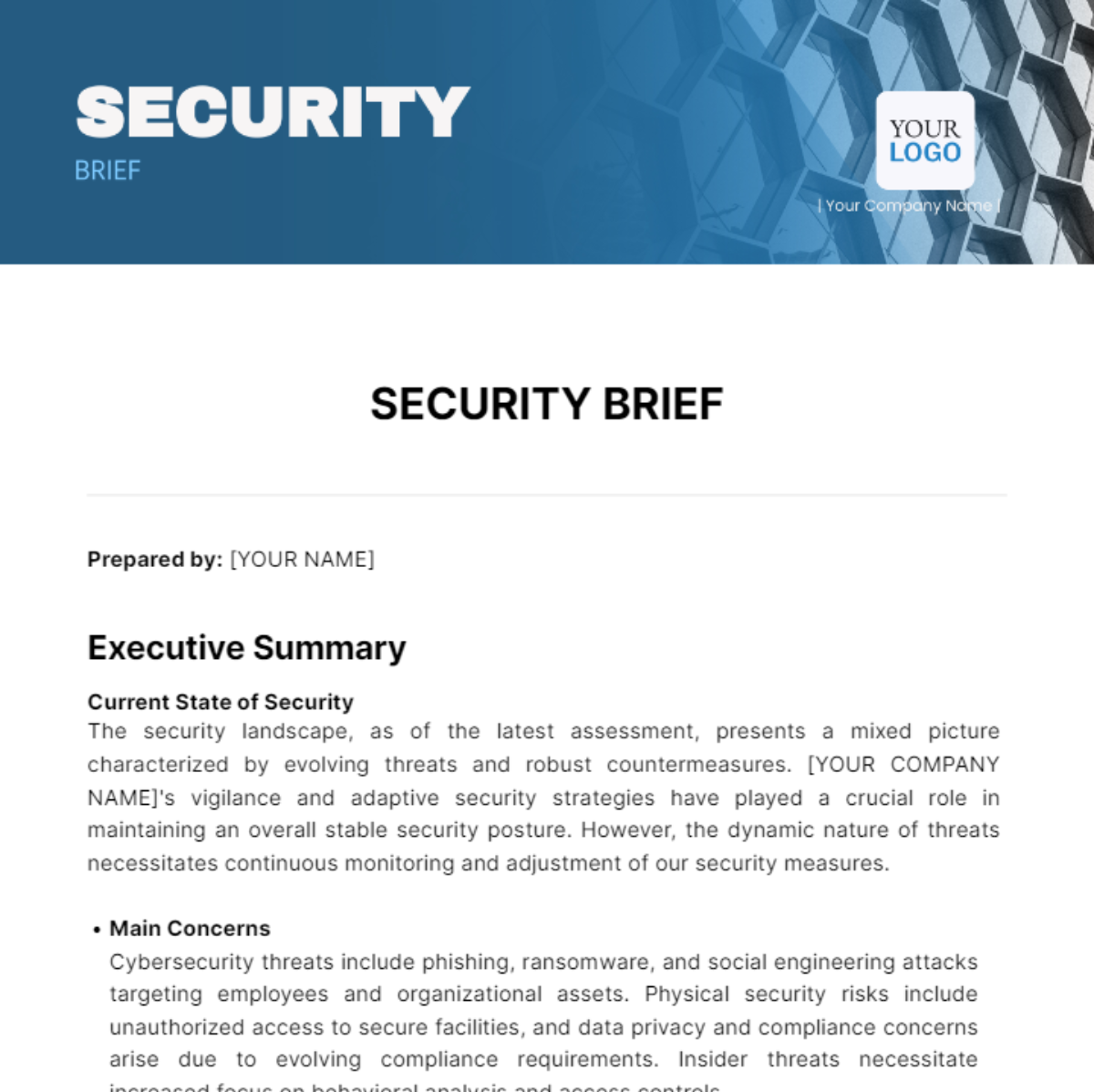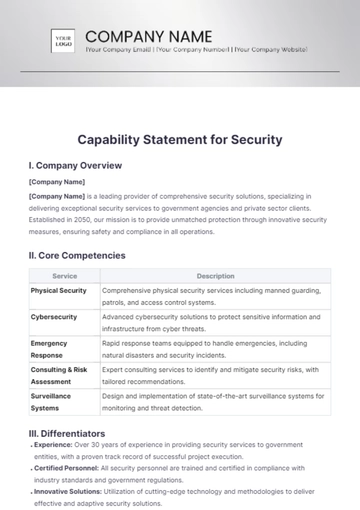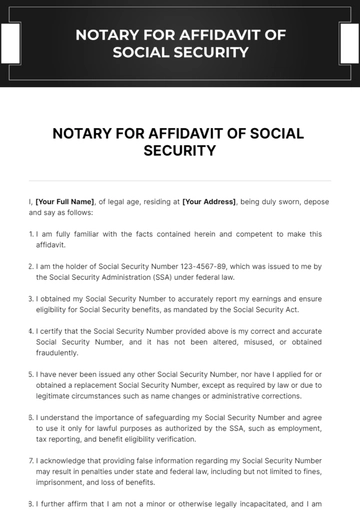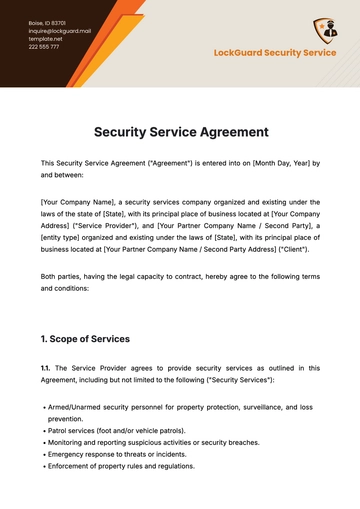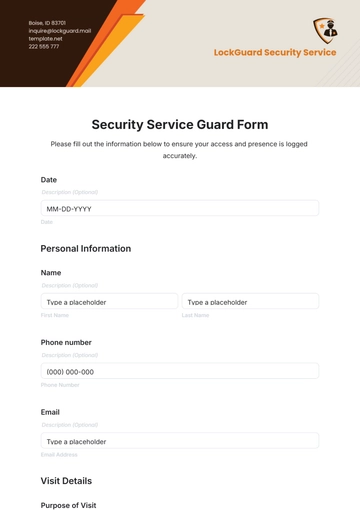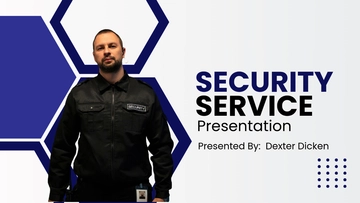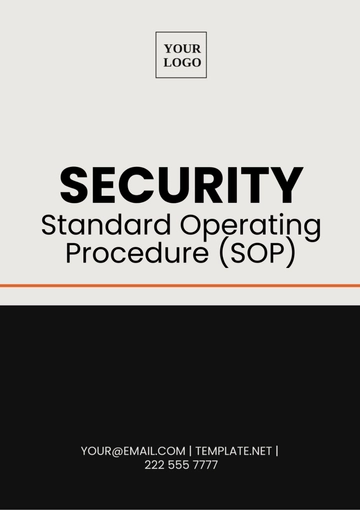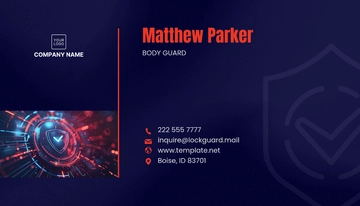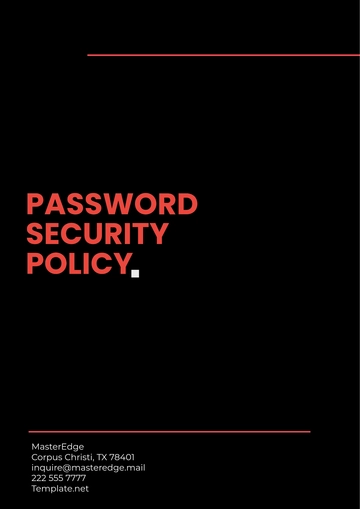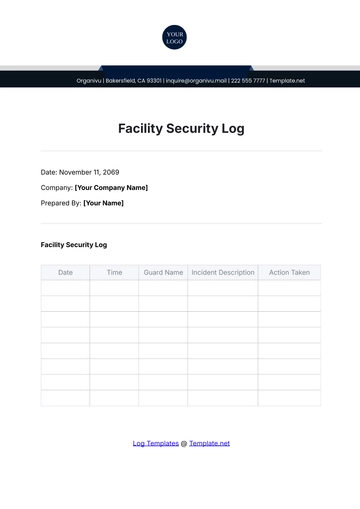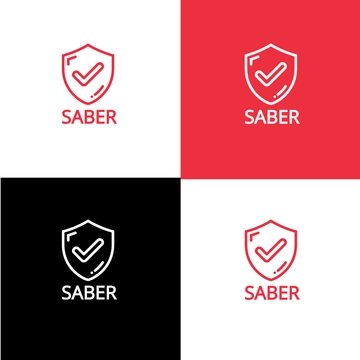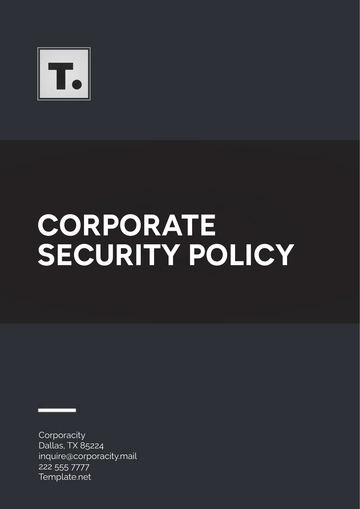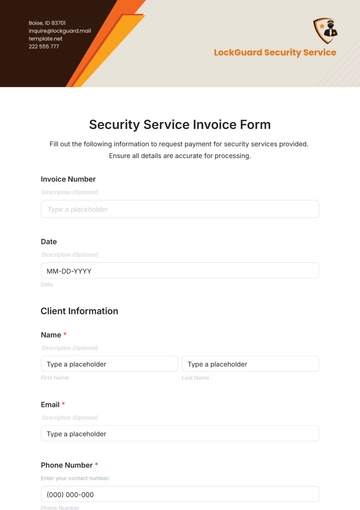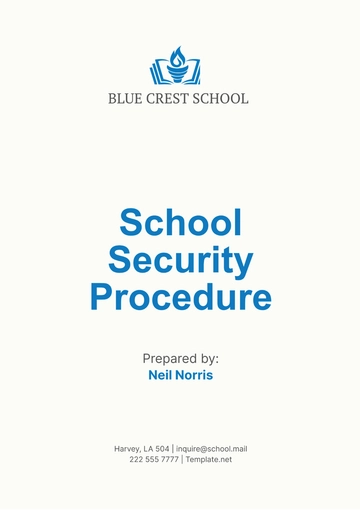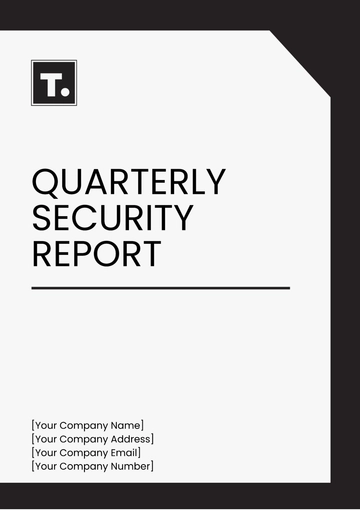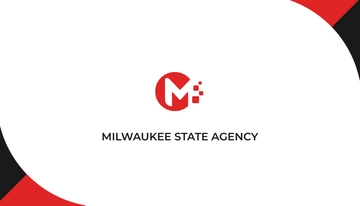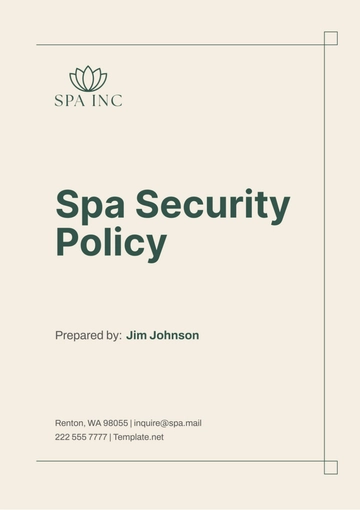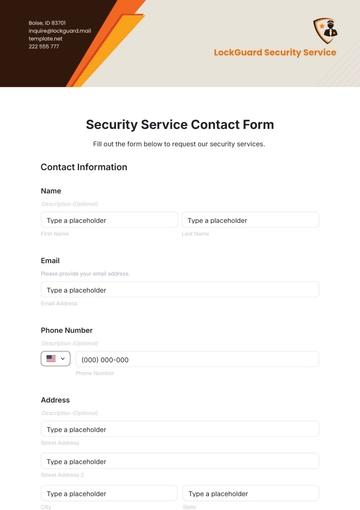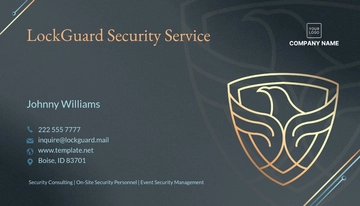SECURITY BRIEF
Prepared by: [YOUR NAME]
Executive Summary
Current State of Security
The security landscape, as of the latest assessment, presents a mixed picture characterized by evolving threats and robust countermeasures. [YOUR COMPANY NAME]'s vigilance and adaptive security strategies have played a crucial role in maintaining an overall stable security posture. However, the dynamic nature of threats necessitates continuous monitoring and adjustment of our security measures.
Main Concerns
Cybersecurity threats include phishing, ransomware, and social engineering attacks targeting employees and organizational assets. Physical security risks include unauthorized access to secure facilities, and data privacy and compliance concerns arise due to evolving compliance requirements. Insider threats necessitate increased focus on behavioral analysis and access controls.
Potential Threats
Advanced Persistent Threats (APTs) are cyber-attacks by sophisticated adversaries, while supply chain vulnerabilities introduce risks from third-party vendors and software. Emerging technology exploits, such as cloud services and IoT devices, introduce uncharted security vulnerabilities.
General Security Health
The [YOUR COMPANY NAME] has robust security health, with strong incident response capabilities, proactive threat intelligence gathering, enhanced cyber defenses, physical security improvements, data protection initiatives, multi-factor authentication, employee training, advanced endpoint detection solutions, and regular audits.
Current Security Status
The current security status of [YOUR COMPANY NAME] reflects a comprehensive and ongoing effort to safeguard assets, data, and personnel against a variety of threats. Below is a detailed account of the latest findings from security audits, identified weaknesses, and incidents that have occurred in the recent past.
Recent Security Audits
The [YOUR COMPANY NAME] underwent a security audit, revealing a robust cybersecurity framework, but recommending improved patch management and enhancing integration between physical and cyber security measures.
Current Weaknesses Identified
Patch management delays, insufficient insider threat detection, and gaps between cyber and physical security are critical vulnerabilities in cybersecurity. Improved analytical tools and a cohesive approach are needed to bridge these gaps.
Security Breaches or Incidents in the Recent Past
A phishing campaign targeted employees, allowing unauthorized access to non-critical company data. The incident was quickly contained but highlighted the need for ongoing security awareness training. An unauthorized access attempt was thwarted.
Threat Landscape
[YOUR COMPANY NAME] must comprehend the current and emerging threat landscape, which includes cyber threats, physical security challenges, and internal risks, to effectively manage its security efforts.
Present-day cyber threats
Ransomware attacks, phishing schemes, Advanced Persistent Threats (APTs), and supply chain attacks pose significant threats to [YOUR COMPANY NAME]. Ransomware attacks target [YOUR COMPANY NAME]'s for financial gain or disruption, while phishing schemes trick employees into divulging sensitive information. APTs are coordinated attacks aimed at stealing data or causing harm over time.
Physical security threats
Unauthorized access to facilities, surveillance and espionage risks, and natural disasters pose significant threats to [YOUR COMPANY NAME], requiring adequate preparedness and resilience planning to prevent theft, vandalism, and harm to personnel.
Internal security risks
Insider threats, lack of awareness, and compliance gaps are significant risks to [YOUR COMPANY NAME]. Disgruntled employees can leak sensitive information, grant access, or introduce malware. Regular training and enforcement of security policies can help prevent these risks.
Recommendations
To navigate the complex and evolving threat landscape effectively, [YOUR COMPANY NAME] must adopt a comprehensive and proactive approach to security.
Implement state-of-the-art threat detection and response systems that leverage machine learning and artificial intelligence (AI) to identify and neutralize sophisticated cyber threats in real-time.
SAdopt SASE solutions to integrate networking and security into a single, cloud-native service, ensuring secure and efficient access to resources for a distributed workforce.
Upgrade existing endpoint protection platforms (EPP) with EDR capabilities to provide more comprehensive monitoring, analysis, and response to threats on endpoints.
Conclusion
[YOUR COMPANY NAME] faces a complex array of security challenges ranging from sophisticated cyber threats to internal vulnerabilities and physical security risks. By investing in advanced security technologies, enhancing our security protocols, and fostering a culture of continuous employee training, we can significantly fortify our defenses. Embracing a comprehensive and proactive security strategy will enable us to navigate the evolving threat landscape effectively, ensuring the ongoing protection of our assets, data, and personnel.
Brief Templates @ Template.net
